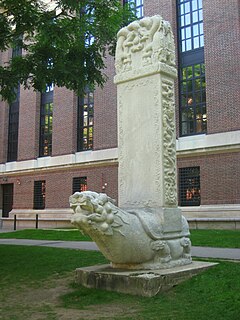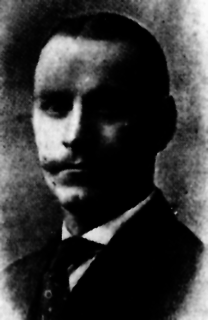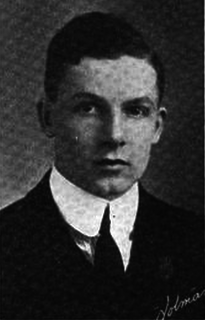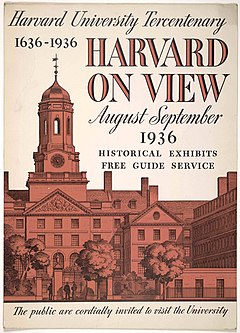
The Ivy League is an American collegiate athletic conference comprising eight private research universities in the Northeastern United States. The term Ivy League is typically used beyond the sports context to refer to the eight schools as a group of elite colleges with connotations of academic excellence, selectivity in admissions, and social elitism. Its members are Brown University, Columbia University, Cornell University, Dartmouth College, Harvard University, the University of Pennsylvania, Princeton University, and Yale University.

Harvard College is the undergraduate college of Harvard University, an Ivy League research university in Cambridge, Massachusetts. Founded in 1636, Harvard College is the original school of Harvard University, the oldest institution of higher learning in the United States and among the most prestigious in the world.

Samuel Eliot Morison was an American historian noted for his works of maritime history and American history that were both authoritative and popular. He received his Ph.D. from Harvard University in 1912, and taught history at the university for 40 years. He won Pulitzer Prizes for Admiral of the Ocean Sea (1942), a biography of Christopher Columbus, and John Paul Jones: A Sailor's Biography (1959). In 1942, he was commissioned to write a history of United States naval operations in World War II, which was published in 15 volumes between 1947 and 1962. Morison wrote the popular Oxford History of the American People (1965), and co-authored the classic textbook The Growth of the American Republic (1930) with Henry Steele Commager.

James Bryant Conant was an American chemist, a transformative President of Harvard University, and the first U.S. Ambassador to West Germany. Conant obtained a Ph.D. in Chemistry from Harvard in 1916. During World War I he served in the U.S. Army, working on the development of poison gases, especially Lewisite. He became an assistant professor of chemistry at Harvard in 1919 and the Sheldon Emery Professor of Organic Chemistry in 1929. He researched the physical structures of natural products, particularly chlorophyll, and he was one of the first to explore the sometimes complex relationship between chemical equilibrium and the reaction rate of chemical processes. He studied the biochemistry of oxyhemoglobin providing insight into the disease methemoglobinemia, helped to explain the structure of chlorophyll, and contributed important insights that underlie modern theories of acid-base chemistry.

Memorial Hall, immediately north of Harvard Yard in Cambridge, Massachusetts, is an imposing High Victorian Gothic building honoring Harvard men's sacrifices in defense of the Union during the American Civil War—"a symbol of Boston's commitment to the Unionist cause and the abolitionist movement in America."

The Harvard Club of New York City, commonly called The Harvard Club, is a private social club located in Midtown Manhattan, New York City.

Harvard University is a private Ivy League research university in Cambridge, Massachusetts. Founded in 1636 as Harvard College and named for its first benefactor, the Puritan clergyman John Harvard, it is the oldest institution of higher learning in the United States and among the most prestigious in the world.

The Harvard Bixi is a 17-foot high, 27 ton Chinese marble stele with a turtle pedestal located at Harvard University, north of Boylston Hall and west of Widener Library in Harvard Yard, in Cambridge, Massachusetts. The stele was presented to the university by the Chinese Harvard Alumni for its Tercentenary in September 1936.

The Samuel Eliot Morison bibliography contains a list of books and articles written by American historian Samuel Eliot Morison.

Charles Robert Apted (1873–1941) was for 39 years a Harvard University official in various capacities, for much of that time chief of the Harvard Yard police ("Harvard Cop No. 1", the Boston Globe called him) and superintendent of Harvard buildings. His Boston Globe obituary called him "both feared and beloved by undergraduates during three university presidential administrations".

What was originally called Harvard Colledge (around which Harvard University eventually grew) held its first Commencement in September 1642, when nine degrees were conferred. Today some 1700 undergraduate degrees, and 5000 advanced degrees from the university's various graduate and professional schools, are conferred each Commencement Day.

Lionel de Jersey Harvard was a young Englishman who, discovered to be collaterally descended from Harvard College founder John Harvard, was consequently offered the opportunity to attend that university, from which he graduated in 1915. The first Harvard to attend Harvard, he died in the First World War less than three years later, leaving a wife and infant son.

The Maryland Tercentenary half dollar was a commemorative fifty-cent piece issued by the United States Bureau of the Mint in 1934. It depicts The Rt Hon. The 2nd Baron Baltimore on the obverse and the Coat of Arms of Maryland on the reverse.

The Connecticut Tercentenary half dollar, sometimes called the Connecticut half dollar, is a commemorative fifty-cent piece struck by the United States Bureau of the Mint in 1935. The coin was designed by Henry Kreis and commemorates the 300th anniversary of the founding of Connecticut. Its obverse depicts the Charter Oak, where according to legend Connecticut's charter was hidden to save it from being confiscated by the English governor-general. An eagle appears on the coin's reverse side.

The Wisconsin Territorial Centennial half dollar was designed by David Parsons and Benjamin Hawkins and minted in 1936. The obverse depicts a badger and the territorial seal, while the reverse shows a pick axe and lead ore.

The Long Island Tercentenary half dollar was a commemorative half dollar struck by the United States Bureau of the Mint in 1936. The obverse depicts a male Dutch settler and an Algonquian tribesman, and the reverse shows a Dutch sailing ship. It was designed by Howard Weinman, the son of Mercury dime designer Adolph A. Weinman.

The Delaware Tercentenary half dollar is a commemorative fifty-cent piece struck by the United States Bureau of the Mint to commemorate the 300th anniversary of the first successful European settlement in Delaware. The obverse features the Swedish ship Kalmar Nyckel, which brought early settlers to Delaware, and the reverse depicts Old Swedes Church, claimed to be the oldest Protestant church in the United States still in use as a place of worship. While the coins are dated "1936" on the obverse and the reverse also has the dual date of "1638" and "1938", the coins were actually struck in 1937.
Arthur A. Ballantine (1883–1960) was a 20th-century American lawyer, tax specialist, who became the first solicitor of the Internal Revenue Service and Undersecretary of the Treasury under U.S. President Herbert Hoover and later partner in what became the Dewey Ballantine law firm.
















